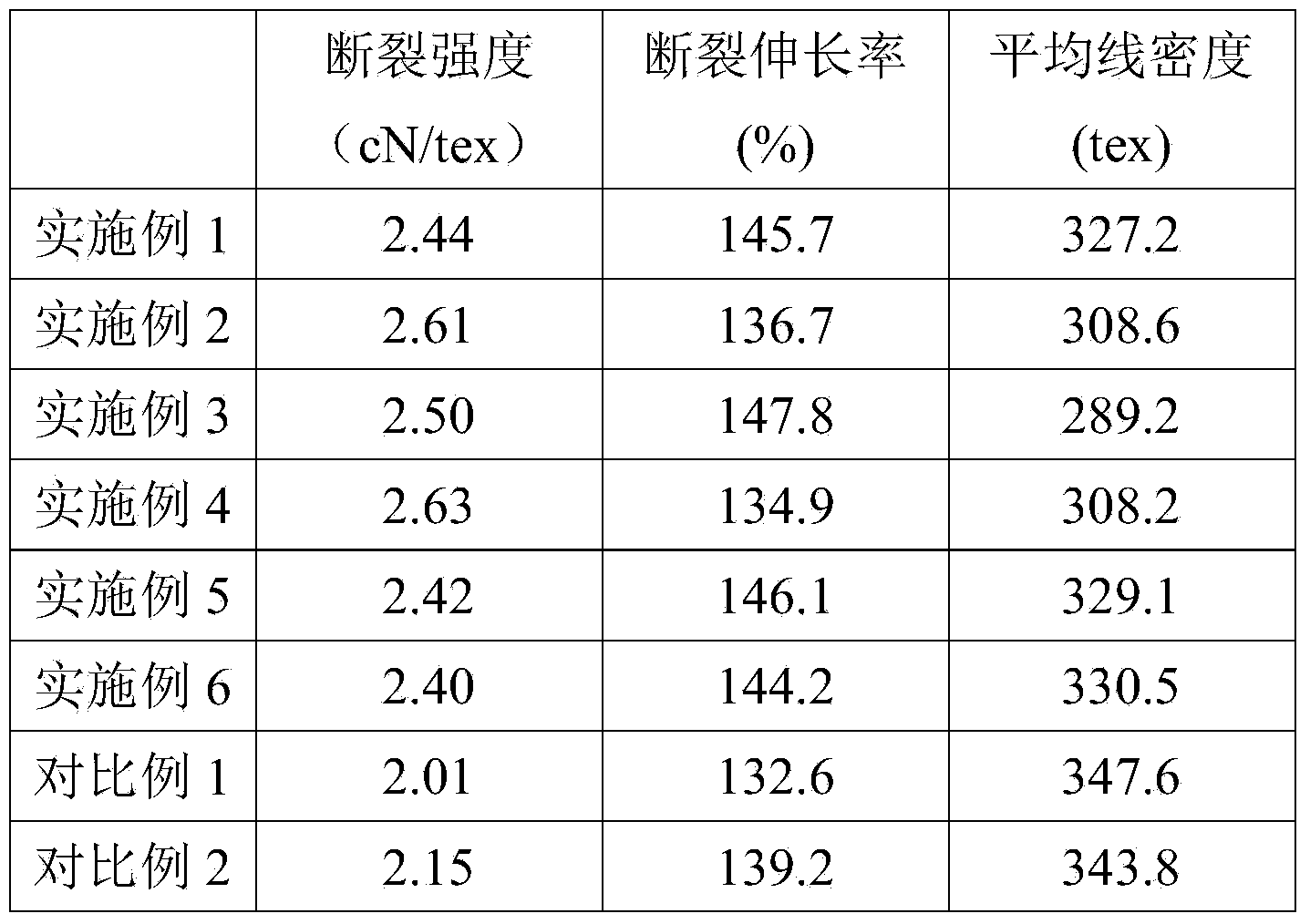Method for preparing filaments for spinning through recycled PET (polythylene terephthalate) bottle
A technology of filaments and fragments, applied in the direction of single-component copolyester artificial filaments, etc., can solve the problem of high cost and achieve the effects of high production efficiency, perfect crystal structure and small interaction force
- Summary
- Abstract
- Description
- Claims
- Application Information
AI Technical Summary
Problems solved by technology
Method used
Image
Examples
Embodiment 1
[0026] (1) The recycled PET bottles are crushed, washed and dried to obtain PET fragments. The average size of the PET fragments is 4mm;
[0027] (2) Add the PET chips to the parallel co-rotating twin-screw extruder, the temperature of the feeding section in the barrel of the parallel co-rotating twin-screw extruder: 200℃ in the first zone, 250℃ in the second zone; temperature in the melting zone: three, Zone 4 and zone 5 are both at 265°C, zone 6 is at 270°C; the homogenization zone temperature is 265°C; the screw speed is 60r / min, and the melt is obtained through melt blending and filtration;
[0028] (3) Send the melt to the closed reactor A, inject nitrogen into the closed reactor A, add 3-fluoro-1,2-propanediol under the agitation of the nitrogen flow, the quality of 3-fluoro-1,2-propanediol The mass percentage of the PET chips is 3%, and then the aluminum-based catalyst aluminum glycol is added. The mass percentage of the aluminum glycol aluminum and the mass percentage of 3-...
Embodiment 2
[0031] (1) The recycled PET bottles are crushed, washed and dried to obtain PET fragments. The average size of the PET fragments is 4mm;
[0032] (2) Add the PET chips to the parallel co-rotating twin-screw extruder, the temperature of the feeding section in the barrel of the parallel co-rotating twin-screw extruder: 200℃ in the first zone, 250℃ in the second zone; temperature in the melting zone: three, Zone 4 and Zone 5 are both at 265°C, zone 6 is 270°C; the homogenization zone temperature is 265°C; the screw speed is 60r / min, and the melt is obtained through melt blending and filtration;
[0033] (3) Send the melt to the closed reactor A, inject nitrogen into the closed reactor A, add 3-fluoro-1,2-propanediol under the agitation of the nitrogen flow, the quality of 3-fluoro-1,2-propanediol The mass percentage of the PET fragments is 4%, and then the aluminum-based catalyst aluminum glycol is added. The mass percentage of the aluminum glycol aluminum to the mass percentage of 3-...
Embodiment 3
[0036] (1) The recycled PET bottles are crushed, washed and dried to obtain PET fragments. The average size of the PET fragments is 4mm;
[0037] (2) Add the PET chips to the parallel co-rotating twin-screw extruder, the temperature of the feeding section in the barrel of the parallel co-rotating twin-screw extruder: 200℃ in the first zone, 250℃ in the second zone; temperature in the melting zone: three, Zone 4 and Zone 5 are both at 265°C, zone 6 is 270°C; the homogenization zone temperature is 265°C; the screw speed is 60r / min, and the melt is obtained through melt blending and filtration;
[0038] (3) Send the melt to the closed reactor A, inject nitrogen into the closed reactor A, add 3-fluoro-1,2-propanediol under the agitation of the nitrogen flow, the quality of 3-fluoro-1,2-propanediol The mass percentage of PET fragments is 5%, and then the aluminum-based catalyst aluminum acetate is added. The mass percentage of aluminum acetate and 3-fluoro-1,2-propanediol is 0.06%. The ...
PUM
 Login to View More
Login to View More Abstract
Description
Claims
Application Information
 Login to View More
Login to View More - R&D
- Intellectual Property
- Life Sciences
- Materials
- Tech Scout
- Unparalleled Data Quality
- Higher Quality Content
- 60% Fewer Hallucinations
Browse by: Latest US Patents, China's latest patents, Technical Efficacy Thesaurus, Application Domain, Technology Topic, Popular Technical Reports.
© 2025 PatSnap. All rights reserved.Legal|Privacy policy|Modern Slavery Act Transparency Statement|Sitemap|About US| Contact US: help@patsnap.com

